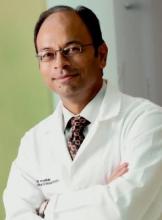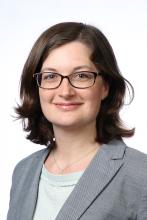This week, the New York Times featured an opinion piece written by three board members of the Physician-Scientist Support Foundation, including Mukesh Jain, MD, University Hospitals cardiologist, professor at Case Western Reserve University (CWRU) School of Medicine and member of the Case Comprehensive Cancer Center (Case CCC).
In the article, the authors list several examples of medical breakthroughs that were the result of the melding of clinical practice with basic science research. The Case CCC has an extensive history of supporting valuable laboratory research experiences necessary to cultivate successful physician-scientists.
“In addition to the University’s formal physician-scientist training programs, the Cancer Center has developed programs to ensure that MD trainees are continually exposed to basic research throughout their training,” said Mark Jackson, PhD, associate professor of pathology at CWRU School of Medicine and Associate Director for Cancer Training & Education at the Case CCC. “Integration of MD and PhD trainees teaches them to speak each other’s language, which helps break down barriers between disciplines and ultimately, advance cancer care for patients.”
Cross-discipline training allows physician-scientists to bring clinical experience back to the lab, generating hypotheses that can be translated into clinical trials and ultimately, impact future clinical decisions. Bridging the gap between patient care and novel investigations, physician-scientists are poised to communicate the value and clinical relevance of intricate discoveries.
This perspective is echoed by J. Eva Selfridge, MD, PhD, senior hematology/oncology fellow in the Harrington Physician Scientist Pathway at University Hospitals and laboratory of Zhenghe (John) Wang, PhD. Choosing to train as a physician-scientist allows her to help people directly in the clinic while also pursuing research that would help more patients than she could ever see in her lifetime. “I can’t think of anything better to do,” she said.



